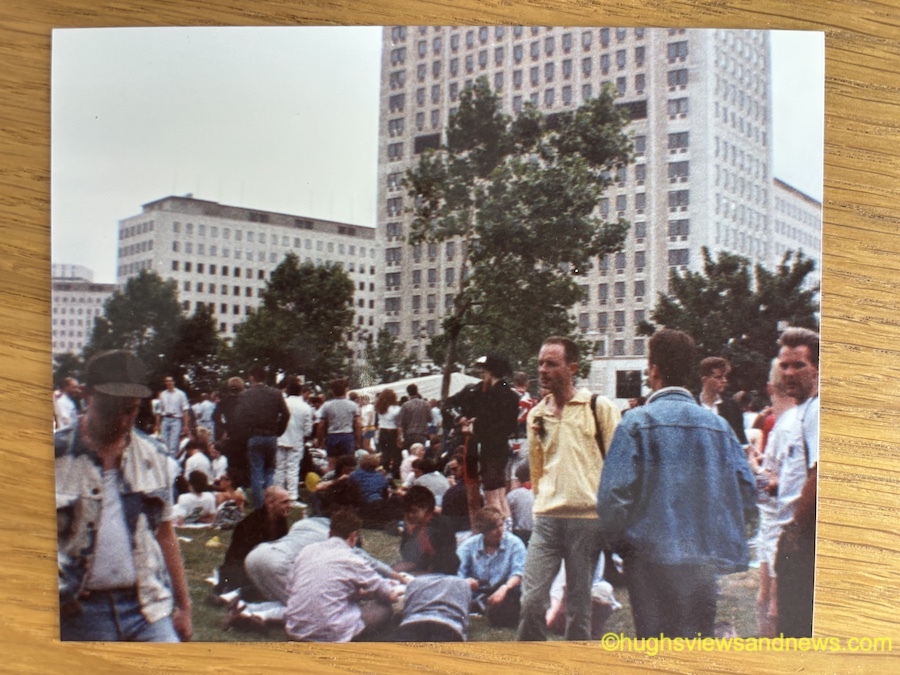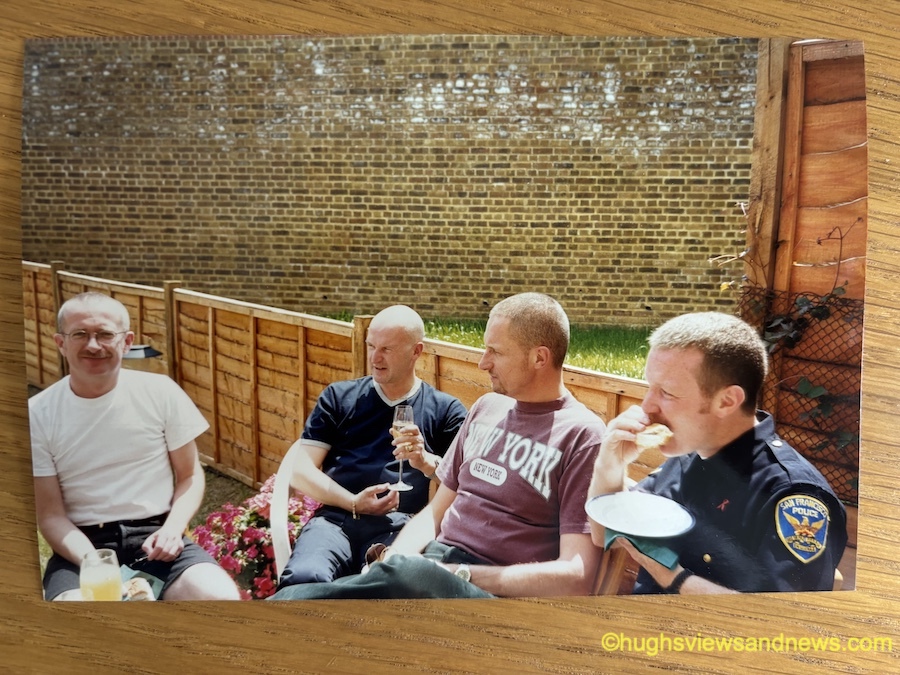When the first Gay Pride march took place in London on July 1, 1972, I was too young to understand what was happening. I can’t recall anyone talking about it. Homosexuality was a taboo subject during the 1970s.
It wasn’t until years later, when I could reflect on these events, that I truly understood the significance of that day. I remember feeling a sense of awe and inspiration when I learned about the brave individuals who took part in that march, paving the way for the LGBTQ+ rights we enjoy today.
July 1972
July 1, 1972, was chosen as the date of the first Gay Pride march in London because it was the closest Saturday to the anniversary of the June 28, 1969, Stonewall riots. These riots, a series of spontaneous, violent demonstrations by members of the LGBTQ+ community in response to a police raid, are widely considered to be the catalyst for the modern LGBTQ+ rights movement.
An estimated 500 people attended the march in London in 1972, which was heavily policed. The police presence, while intended to maintain order, also served as a reminder of the societal attitudes towards homosexuality at the time, which were often hostile and discriminatory.
I regret that I’ve never had the opportunity to meet any of those brave souls who participated in that first march. Their courage as they walked down Oxford Street towards Hyde Park in the face of a society that often viewed them with hostility and discrimination is genuinely admirable.
1980s
The first Pride march I attended was in London during the mid-1980s. The march ended on the embankment where the London Eye now stands. It was a small event with a few stalls and people sitting on blankets on the grass, eating and drinking. I don’t recall any entertainment tents, although I remember a small fun fair and an ice cream van making an excellent trade.
I don’t recall any trouble at this pride event, although there was a high police presence. The atmosphere was celebration and solidarity as LGBTQ+ individuals and their allies united to assert their right to be visible and proud.
Fast forward to the late 1980s, when Pride was getting more prominent. I recall marching down a road in Kennington, South London, and the march being pelted with bottles, eggs, and stones by onlookers who shouted homophobic abuse. Along with several other marchers, I took refuge in a fish and chip shop while the police made arrests. The owner and staff of the shop were very kind and gave first aid to those of us hit by the missiles thrown. Those of us who could continue the march were rewarded with fish and chips as the march headed towards its end in Clapham.
1990s
I continued attending London and Brighton Pride events right into the 1990s as the events grew. On the day of Pride, underground and overground trains, buses, and other forms of transport were filled with a party atmosphere as people made their way to Pride.
I recall seeing a complete diversity of people attending. Everyone was welcome at Pride, and as the event grew, more prominent locations were needed to cope with the number of attendees.
At one Pride march, I recall being dressed in a San Francisco police outfit. Upon entering the park where the event was being held, a group of British policemen approached me. I thought I was going to be arrested, but all they wanted was for me to have my photograph taken with them. What made it more special, though, was that the group of policemen was a mixture of gay, bisexual, and straight officers. They liked my outfit and we laughed and joked about the differences. How the police attitude had changed since the early days of pride.
By the end of the 1990s, arrests on pride marches were made for drug-related crimes rather than for homophobic or threatening behaviour. Society was changing fast and becoming more accepting of the LGBTQ+ community.
The Present and Future of Gay Pride in the UK
Today, gay pride celebrations occur across the UK, including the iconic Pride in London and Brighton Pride. Many are significant events with thousands of people attending, especially when famous pop stars such as Kylie Minogue, The Pet Shop Boys, and Lady Gaga appear on stage.
As I have grown older, attending these events does not appeal to me anymore as I no longer seem to be able to cope with being amongst large crowds. I prefer staying home waving my rainbow flag while watching the celebrations on TV or YouTube.
These events serve as a reminder that the struggle for equality is the responsibility of society as a whole, not just the LGBTQ+ community.
The history of gay Pride in the UK is a testament to the enduring spirit of resilience and the pursuit of equality within the LGBTQ+ community. It serves as a reminder of the progress made and the work that still lies ahead in creating a more inclusive and equitable society.
Proudly waving the rainbow flag, the UK continues to march forward in the journey towards true equality and acceptance for all.
Remember, love is love.
Happy Pride!
Notes from the author.
I’m proud to have attended pride marches and events and helped in the struggle to get LGBTQ+ people equal rights. If it had not been for those struggles, my partner and I would never have been allowed to have our civil partnership in 2006. We now have the same rights as a heterosexual married couple does, although there are still some areas where more work is needed.
I can’t imagine what life would have been like for gay people in the UK before homosexuality was decriminalised in 1967. Having to live a life as a lie and forever being in fear of getting found out and sent to prison for who you were must have been a terrible way to live life.
Of course, discrimination sadly still exists in all forms of life. Hatred toward others simply because they are not the same as us, live like us, or hold the same values should be locked away and forgotten. Remember that in some parts of the world, being a member of the LGBTQ+ society is a punishable crime, sometimes with a death sentence. One day, I hope everyone can love who they want to love and live a peaceful life without being judged by others for it.
If you enjoyed this entry, you might also enjoy the following: ‘True Stories: Gay Memories—The Day My Life Changed.‘
Last month, In this series, the subject was Nightlife. Click the link below to read it.
True Stories: Confessions Of A Gay Man – Nightlife
Three contrasting nights out reveal the challenges and joys of a gay man’s life.
Incidents highlight the struggle for acceptance as well as a changing societal attitude towards the LGBT community in the 1980s and 1990s.
You may laugh, you may cry, but these three true stories about gay nightlife are very different.
Please feel free to ask me any questions by leaving me a comment.
Click the buttons below to follow Hugh on Social Media
Copyright @ 2024 hughsviewsandnews.com – All rights reserved.



